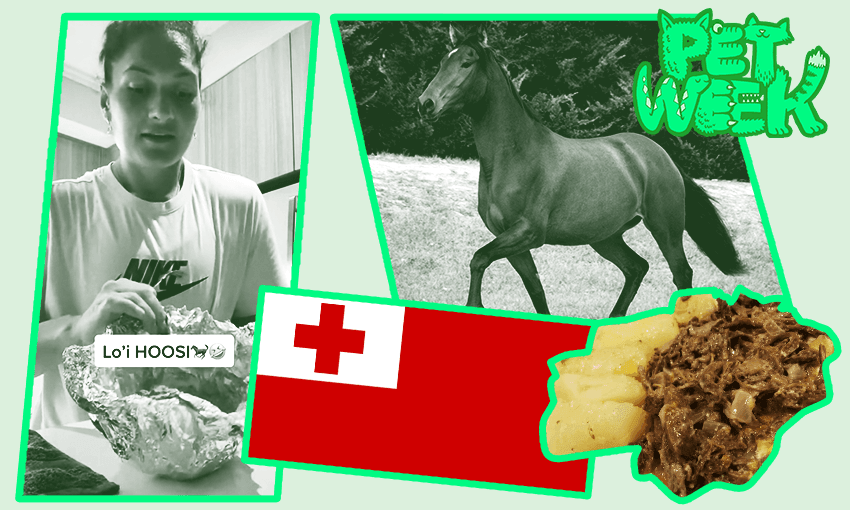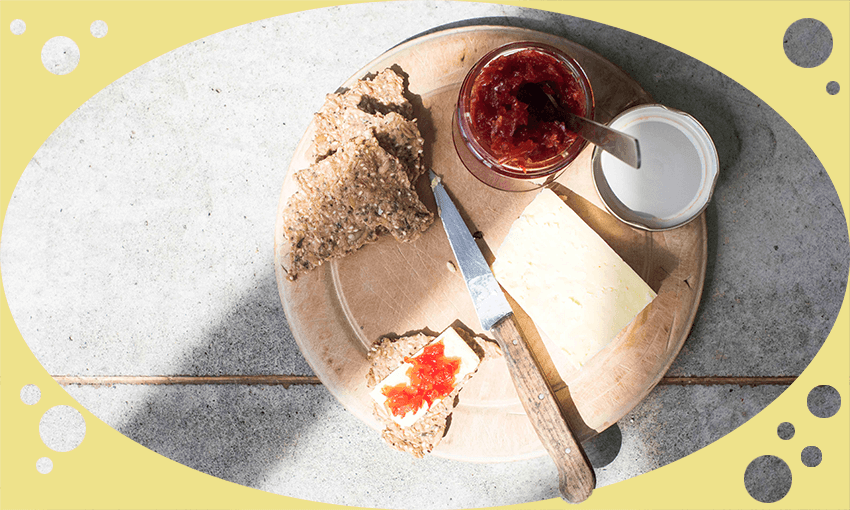Dame Valerie Adams has raised some eyebrows by singing the praises of horse meat on TikTok. But in many cultures, including that of Tonga, it’s a delicacy. Sela Jane Hopgood tells all.
People love to trot out the line that Tongans eat horse. If I had one dollar for every comment, “neigh” sound effect or joke made about Tongans who eat horse meat, I would be able to buy a house in St Heliers.
If you’re new to the party, for many decades now, people from Tonga have been enjoying a Tongan dish called lo’i hoosi, which consists of diced onions, coconut cream, salt and the main attraction: shredded, succulent horse meat. The meat is like a slightly sweeter version of beef – tender, high in protein and low in fat. Tongans love to pair lo’i hoosi up with manioke or cassava.
In recent years I’ve seen Tongans take it a step further, adding spices such as chilli flakes or curry powder to the mix. Some have also taken a leaf out of Canada’s recipe book, creating a poutine-style dish using oven baked potato fries and topping it with lo’i hoosi. It’s a delicacy that’s often enjoyed on special occasions, whether that’s a birthday, a funeral gathering of an important family member or a visit from a VIP such as the King of Tonga.
My mother Isapeli ‘Aholelei is from Kolonga in Tonga and her family used to breed horses. The horses would help move carts around their land and transport the family from her village to the capital Nuku’alofa. They were helpful companions, she says. I asked her, “and did you eat those horses?” She replied, “let’s just say we wouldn’t kill our horses just to eat them”. She explains that when one of her horses would die due to natural causes or get killed in an accident, that would be the only time they would feast on the meat. “It was a means of food for our people back in the day, when there weren’t many options for us.” She says for many Tongans, horse meat was readily available and affordable.
In Aotearoa, when non-Tongan people learn about the fact that Tongans consume horse meat, they often respond with raised eyebrows, due to the fact that in many western countries, particularly English-speaking ones like Aotearoa, horses are considered companion animals, not food like cows or sheep are. But Tonga is far from the only culture that relishes horse meat – it’s part of the culinary traditions of many countries, particularly in Asia and Europe, including Japan, where horse meat sashimi is a delicacy, and Austria, where it’s often used in dumplings. While consumption has fallen in recent years in France, in many towns the tell-tale horse head signs can still be seen outside boucheries chevalines – dedicated horse meat butcheries.
The definition of meat for human consumption as per the Food Standards Code in New Zealand and Australia does not include horse. Here it’s only sold legally as pet food – which adds to the discomfort many non-Tongans feel about eating it. Animals slaughtered for human consumption undergo strict controls under New Zealand law to ensure worming medicine residues, antibiotic and fertility treatment medication doesn’t enter the food supply. Animals slaughtered for pet food don’t go through the same process. It doesn’t sound appetising when explained through the Ministry of Primary Industries’ language, but for Tongans, their love for lo’i hoosi existed long before they migrated to a country that doesn’t appreciate horse meat smothered in coconut cream.
On talking with my Pasifika colleagues, we decided that people bringing up Tongans eating horse was a way to differentiate them from other Pacific groups, given Europeans often lump us all together. I’ve lost track of all the times I’ve had to shrug off jokes about Tongans eating horse.
Gold medallist Olympian and proud Tongan Dame Valerie Adams has on a number of occasions shared videos on social media of her eating lo’i hoosi made by her extended family. You can find her encouraging her followers to give it a try. In one video, she prefaces her first bite by saying, “Well if you don’t eat horse and are a bit grossed out by it, keep scrolling,” while later having a good laugh at herself as she accompanies each bite with a horse-riding action.
Tongan men have embraced the strength of the animal, adding the word “horsepower” to their Facebook profile bio. You can find many Tongan families across the motu at various markets selling the meal for around $10. Memes have been created and Tongans have shared mukbang videos of them eating lo’i hoosi. Horse meat will continue to be taboo as long Aotearoa continues to class it as not an item for consumption, but that clearly isn’t stopping most of the Tongan community from enjoying their taste of home away from home.
This is Public Interest Journalism funded through NZ On Air.





